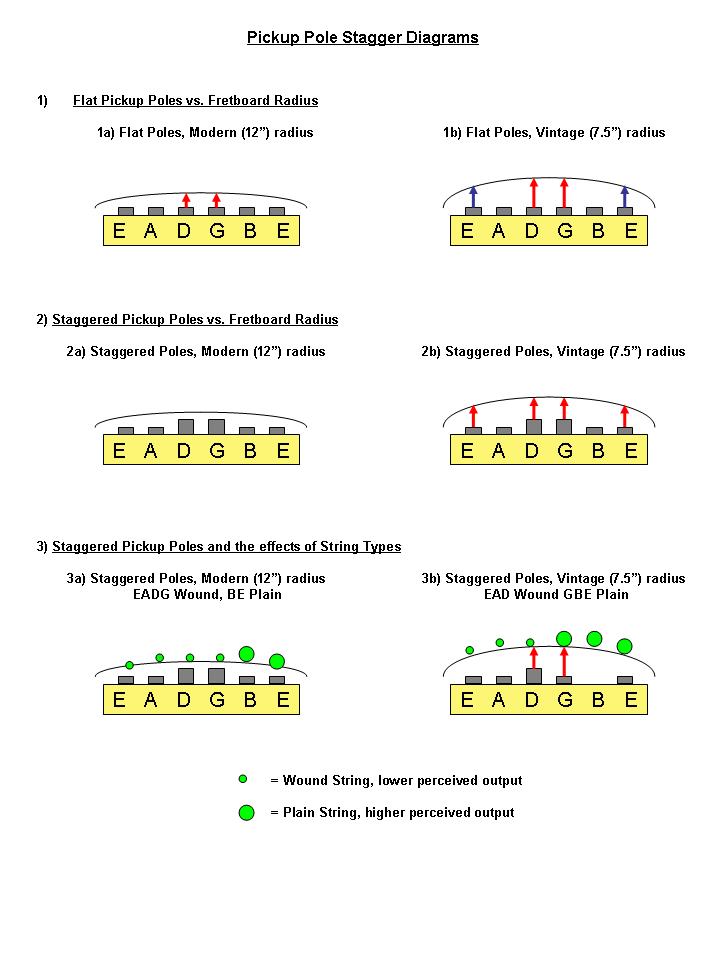Staggered Pickup Polepieces
Staggered Polepieces Introduction:
The use of staggered pickup polepieces surrounded by a lot of 'myth and magic' that it does not really deserve, though undoubtedly, a set of ‘vintage stagger’ polepiece pickups has great visual appeal at least. The concepts driving this are actually very simple, and this article seeks to illustrate that. Beginning with a definition; polepiece stagger is simply the relative heights of the 6 polepieces across the surface of a pickup (focussing here on standard Fender 6 string guitars). By altering the relative heights of the polepieces, the distance between them and the guitar strings is changed. The smaller the string-to-pole gap, the louder that string will sound in a strummed chord for example.
Early Fender’s used 'low' radius fretboards, typically 7.5”. This makes them much more curved than typical modern 12” radius guitar fretboards, as will be the consequent arc the strings will be adjusted to.
Staggered polepieces on pickups were standard on Stratocasters when they were launched in 1954, and stayed that way until 1974 when flat profiles were introduced, only to revert to staggered designs in the early 80’s. The Telecaster has also had changes in this area, starting with a flat (and flush to the pickup top surface) polepiece profile, before receiving staggered polepieces in the 1960s.
The impacts of polepiece stagger, fretboard radius and string type are best visualised with the help of the diagrams below;

In summary then, the changes over time in fretboard radius, string configuration and development (e.g. brighter flat wound strings), have all played a part in causing pickup designers to adopt various stagger and flat pole piece profiles. These are all of course compromises given the huge range of variations in guitar available, and, within limits, adjusting the overall height (and tilt) of any pickups also has a significant effect on altering tone and relative volume (see the Ironstone guide to Guitar Pickup Adjustment). The majority of the Ironstone Stratocaster & Telecaster pickups feature a very light ‘vintage stagger’, i.e. slightly raised D&G poles along the lines of diagrams 2a) and 2b). These are applicable to most fretboard radii and string sets. The Ironstone ‘Hybrid’ Stratocaster pickups use a more pronounced pattern similar to 3b), offering a greater level differentiation between relative string volumes. Hopefully, that has clarified some of the science behind the ‘myths’ and demonstrated how historical change has led to today’s pickup diversity.
